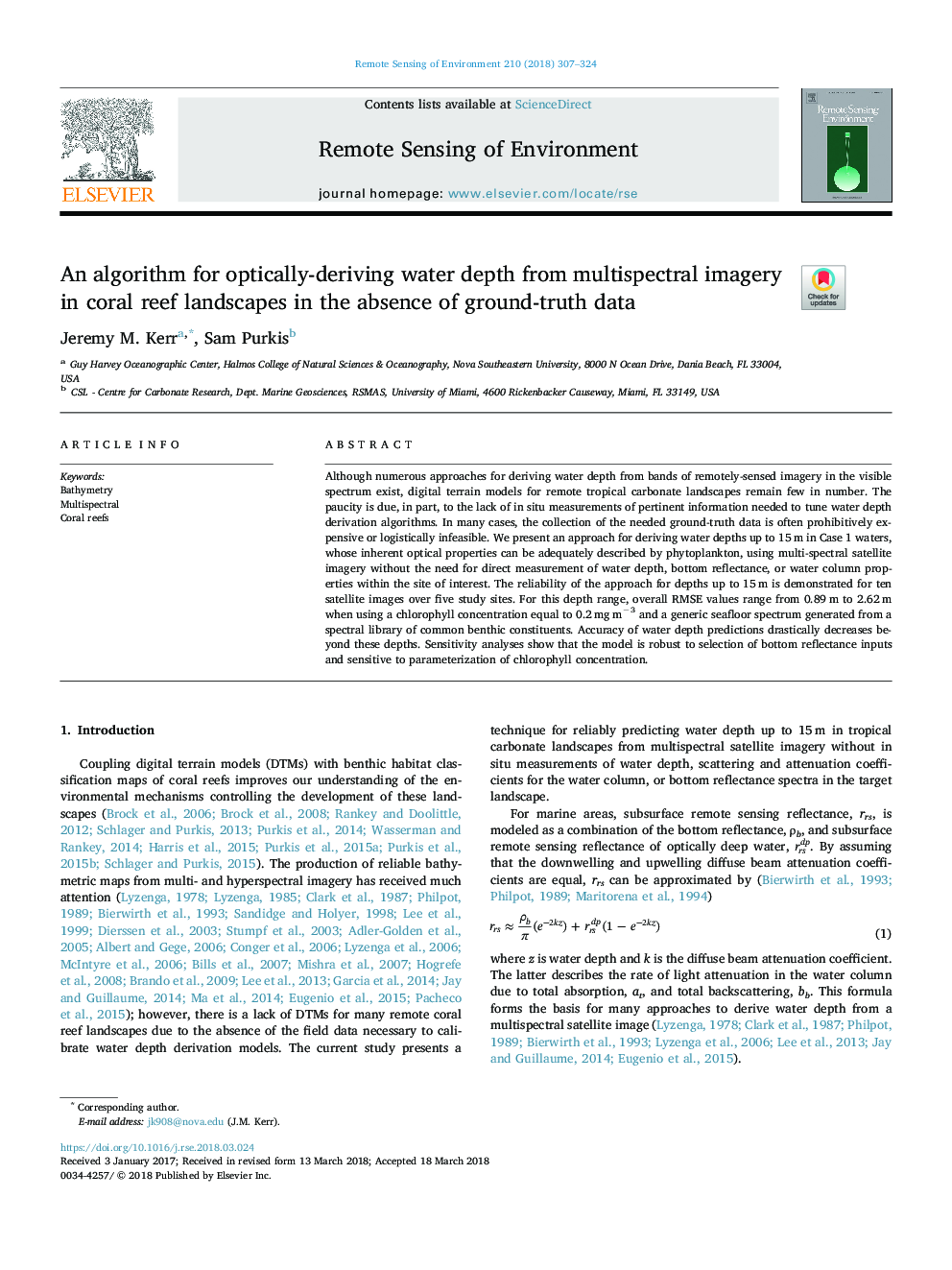| Article ID | Journal | Published Year | Pages | File Type |
|---|---|---|---|---|
| 8866604 | Remote Sensing of Environment | 2018 | 18 Pages |
Abstract
Although numerous approaches for deriving water depth from bands of remotely-sensed imagery in the visible spectrum exist, digital terrain models for remote tropical carbonate landscapes remain few in number. The paucity is due, in part, to the lack of in situ measurements of pertinent information needed to tune water depth derivation algorithms. In many cases, the collection of the needed ground-truth data is often prohibitively expensive or logistically infeasible. We present an approach for deriving water depths up to 15â¯m in Case 1 waters, whose inherent optical properties can be adequately described by phytoplankton, using multi-spectral satellite imagery without the need for direct measurement of water depth, bottom reflectance, or water column properties within the site of interest. The reliability of the approach for depths up to 15â¯m is demonstrated for ten satellite images over five study sites. For this depth range, overall RMSE values range from 0.89â¯m to 2.62â¯m when using a chlorophyll concentration equal to 0.2â¯mgâ¯mâ3 and a generic seafloor spectrum generated from a spectral library of common benthic constituents. Accuracy of water depth predictions drastically decreases beyond these depths. Sensitivity analyses show that the model is robust to selection of bottom reflectance inputs and sensitive to parameterization of chlorophyll concentration.
Keywords
Related Topics
Physical Sciences and Engineering
Earth and Planetary Sciences
Computers in Earth Sciences
Authors
Jeremy M. Kerr, Sam Purkis,
